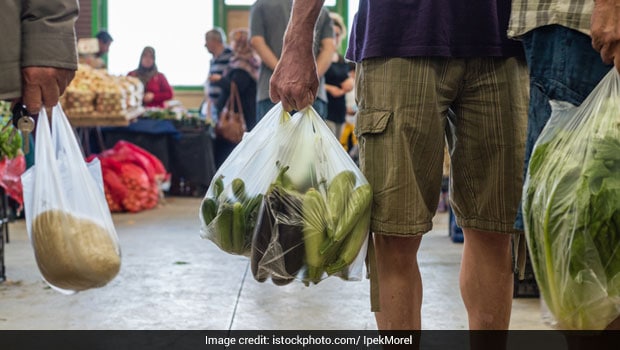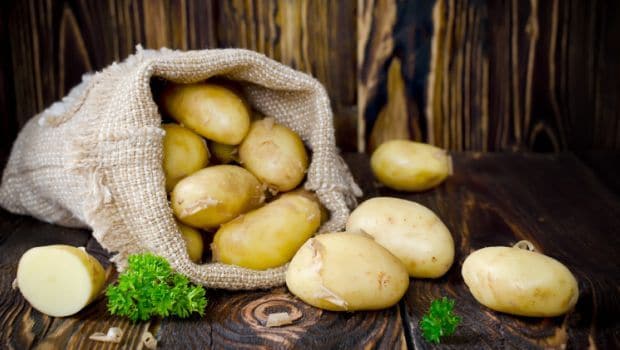Plastics are not naturally producing elements of the earth; they are synthetically manufactured with a combination of chemicals. Two class of suspects under scientific scrutiny are bisphenol A and phthalates. When food is stored in plastic bags, these chemicals can leach into the food and infest them. Studies have shown that these chemicals have been linked to tissue changes, genetic damage, early puberty and hormonal changes. Experts suggest switching to brown paper bags or high grade polyethylene bags for a safer bet.

Despite the entire anti-plastic and go green campaign that is taking over the globe lately, most of us can’t seem to do away with our daily dependence on plastic bags. These inexpensive, easy to handle and easily available plastic bags have invaded our lives to such an extent that daily shopping and storing seems impossible without them. A perfect case in point is our kitchen. Most of us are still guilty of buying our vegetables in the low grade plastic bags or plastic ki theli. Some of us then go on to store these fruits and veggies in plastic zipper bags (made exclusively for that purpose, often touted to safeguard your food). But storing your food needs a little more discretion than just wrapping or zip-locking and putting them in the refrigerators. Turns out that storing food in any plastic, both food storage bags or other plastic bags, can expose humans to several health hazards.
Denying Them Breathing Space
Most of us believe that our fruits and veggies stay ripe for longer when kept out of air. But contrary to popular belief, our vegetables also need space to breathe. So storing them in air tight plastic bags, leaving them no breathing room, is not the best treatment to your store-brought vegetables. Here’s how you can fix it though. Poke holes in the plastic bag or store them in mesh bags and place them in your refrigerator.
Exposure To Chemicals
Plastics are not naturally producing elements of the earth; they are synthetically manufactured with a combination of chemicals. Two class of suspects under scientific scrutiny are bisphenol A and phthalates. When food is stored in plastic bags, these chemicals can ‘leach’ into the food and infest them. Studies have shown that these chemicals have been linked to tissue changes, genetic damage, early puberty and hormonal changes. Experts suggest switching to brown paper bags or high grade polyethylene bags for a ‘safer’ bet.
Exposure To Pest and Bacteria
Food storage bags can be bit open by pests or contaminated by bacteria. So make sure you wash and remove all dirt before storing them in the refrigerator. Plastic grocery bags and food storage bags also have the chances of tearing while shifting food around in the refrigerator, creating conditions for the spread and growth of bacteria. Here are a few storage tips for some of the commonly used fruits and vegetables
1. Apples: Store them on a cool counter or shelf for up to two weeks. If you want to store them for long, store them in a cardboard box in the fridge.
2. Strawberries: Keep them from moisture as much as you can. Store them in paper bags in the fridge, this way they would last you for a week.

3. Tomatoes: Never refrigerate tomatoes. Depending upon the ripeness, tomatoes can stay good for up to two weeks on the counter.
4. Potatoes: Like garlic and onions, store potatoes in a cool, dark and dry place, like a box in a dark corner or a paper bag, which works effectively for the purpose.

5. Greens: Remove the bands or threads that spread them out from the cluster. Store them in air tight containers with a damp cloth, to prevent them from drying out.
1. Plastic bottled water
A research team purchased more than 200 different brands of bottled water from different countries and examined their ingredients. They found there are nearly 350 microplastics per liter of bottled water.
2. Take-away canned food
A team from East China Normal University has found that whether it is a heat-resistant polypropylene lunch box, a polyethylene terephthalate lunch box that can withstand temperatures up to 70°C, or a traditional polystyrene lunch box, microplastics will liberated. According to the average level of microplastics in takeout containers and the frequency of orders by office workers, each person can eat between 12 and 203 pieces of microplastic through a takeout container per day.
3. Tea bags
Researchers from the American Chemical Society found that after steeping tea bags in hot water at 95°C, they released about 11.6 billion microplastics and 31 nanoplastics, which are then released by human absorber.











